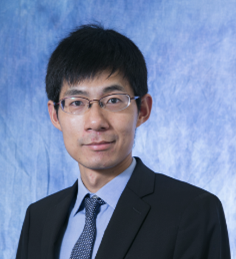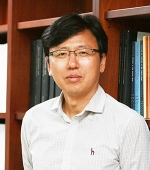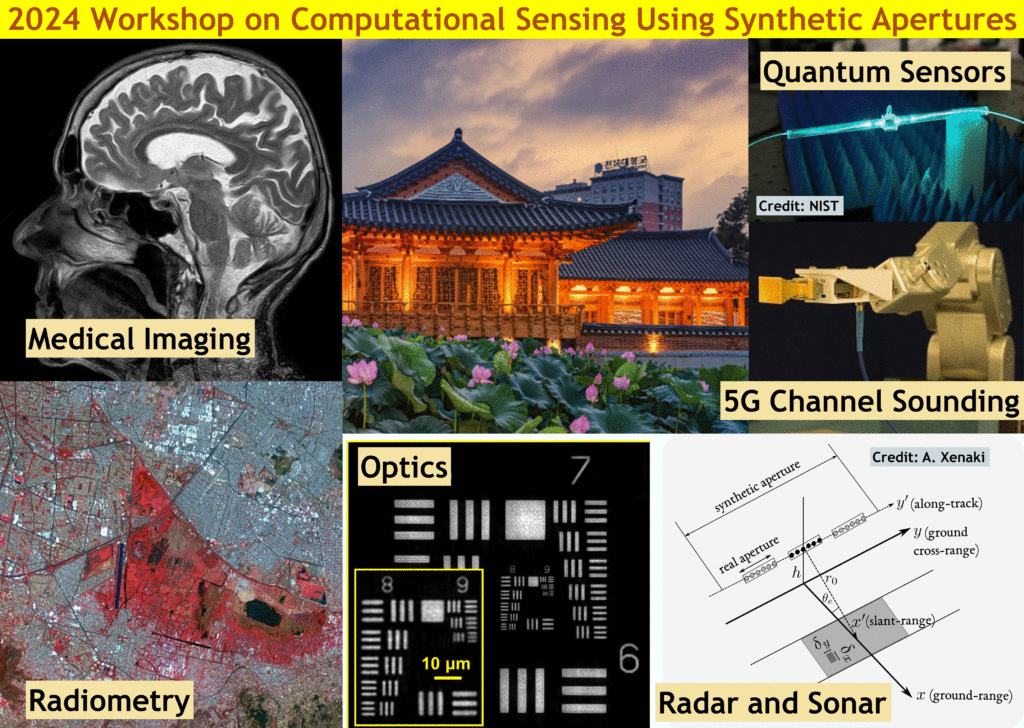The ICASSP-2024 WS-5 workshop on “Computational Imaging Using Synthetic Apertures” in Seoul, Korea invites submissions describing advances in sensing and imaging. The term synthetic aperture (SA) refers generically to a collecton of spatally diverse, phase coherent or phaseless, signal samples taken before an algorithm is applied to extract informaton or create an image. The samples may be measured in the signal domain from a propagating wavefield (channel sounding) or target backscatter (radar, sonar). An SA may also sample in the k-space domain via different look angles around an object or scene, as in X-ray tomography, spotlight SAR or Fourier ptychography. Further, an SA can be a sparse collection of spatially distributed signal samples that yield the sensing performance of a filled aperture after processing steps are applied (radiometry).
Additionally, papers that describe the use of SAs to send information are of interest to the workshop. In this case, the elements of the SA are spatially separated, phase coherent, signal sources. Examples include multiple input multiple output (MIMO) antennas in 5G, wireless power transfer, distributed radars or sensors, unmanned aerial vehicle (UAV) swarms, and 6G communications using intelligent reflecting surfaces. In these applications, a user combines the energy received from all emitters to yield an enhanced output, such as higher data throughput rate or higher SNR.
Monday, 15 April, 14:00 – 17:45 South Korea Time
| Time | Title | Authors |
|---|---|---|
| 14:00 – 14:45 | Keynote Talk, Pushing the Speed and Throughput Limits in Quantitative Phase Imaging | Prof. Renjie Zhou Chinese University of Hong Kong |
| 14:45 – 15:05 | #11509, Predicting the Spectrum: Deep Adaptive Sensing for Hadamard Single Pixel Spectral Imaging | Brayan Monroy, Jorge Bacca, Henry Arguello Universidad Industrial de Santander |
| 15:05 – 15:25 | #11516, Wideband Adaptive Beamforming for a Partially-Calibrated Distributed Array | Anil Ganti, Michael Martinez, Granger Hickman, Jeffrey Krolik Duke University |
| 15:25 – 15:45 | #11667, Non-invasive Occupancy Monitoring Using Sustainable Backscatter Tags | Edmond Chan, Yirui Deng, Amus Goay, Deepak Mishra, Aruna Seneviratne University of New South Wales |
| 15:45 – 16:00 | Break | |
| 16:00 – 16:45 | Keynote Talk, Inverse Synthetic Aperture Radar: From Imaging to Classification | Prof. Kyung-Tae Kim Pohang University of Science and Technology (POSTECH) |
| 16:45 – 17:05 | #11703, IRS Assisted Secure NOMA for Untrusted Users | Kaneez Khatoon, Rvaikant Saini IIT Jammu Deepak Mishra University of New South Wales |
| 17:05 – 17:25 | #11708, An Effective Composite Jamming Method for Synthetic Aperture Radar in Practical Electronic Countermeasures | Xinrui Li, Baixiao Chen Xidian University |
| 17:25 – 17:45 | #11731, K-Space Beamforming for an Array of Quantum Sensors | Peter Vouras U.S. Department of Defense |
Keynote: Pushing the Speed and Throughput Limits in Quantitative Phase Imaging

Abstract: Quantitative phase imaging (QPI) is a label-free imaging technique that has been widely applied to biomedical imaging and material metrology over the past decade. In this talk, I will present several recently developed high speed and high throughput QPI techniques including: (1) high spatiotemporal resolution synthetic aperture phase microscopy that can image and quantify millisecond-level fluctuations in living cells; (2) high-speed laser-illumination Fourier ptychographic microscopy for quantitative phase imaging at over 42 fps with ~ 1 micron lateral resolution; and (3) single-frame tomographic phase microscopy with an unprecedented speed of >10,000 volumes/second and a measurement throughput of >20,000 cells/second for cells flowing in microfluidic devices.
Renjie Zhou is an Associate Professor of the Department of Biomedical Engineering and Assistant Dean (research) of Faculty of Engineering at CUHK, where he directs the Laser Metrology and Biomedicine Laboratory (LAMB). He received a PhD in Electrical and Computer Engineering from the University of Illinois at Urbana-Champaign in 2014 and undertook postdoctoral training at MIT between 2014-2017. His research interest is in developing optical precision instruments with applications in bioimaging and material metrology. He has published over 100 journal and conference papers and filed over 10 US/China patents with several licensed to industry. He is currently serving on the editorial boards of JOSA A, IEEE Photonics Technology Letters, and International Journal of Extreme Manufacturing. He is a Senior Member of Optica and SPIE.
Keynote: Inverse Synthetic Aperture Radar — From Imaging to Classification

Abstract: Synthetic aperture radar (SAR) is a well-known imaging modality using radio signals, especially when the radar is moving, but the object of interest is stationary. However, SAR often fails to focus the image against non-stationary targets like moving ground vehicles, vessels at sea, etc. In this case, ISAR (inverse SAR) is an efficient imaging modality to focus the non-stationary object of interests, and a well-established discipline in the radar community. SAR and ISAR share very similar imaging principles, but differences are pronounced in certain situations.
From the mid-1990s, the Defense Advanced Research Projects Agency (DARPA) and the Air Force Research Laboratory (AFRL) in the U.S. initiated SAR automatic target recognition (ATR) research, which recently receives significant attention due to the advances of deep learning (DL). Thus, SAR ATR research has a long history of over 30 years, and accomplished significant progress so far, resulting in its use for military operations. On the other hand, ISAR ATR has received much less attention than SAR ATR although they share very similar frameworks. This comes from the fact that ISAR images have several issues to be resolved in order to directly exploit them for classification. Moreover, there has been no public ISAR database for ATR research, unlike SAR ATR with the Moving and Stationary Target Acquisition and Recognition (MSTAR) database. In this talk, I will introduce several endeavors for classification of ISAR images in Korea. In particular, the issues mentioned above and their solutions, as well as some imaging and classification examples based on simulated and measured dataset, will be discussed.
Kyung-Tae Kim (Member, IEEE) received the B.S., M.S., and Ph.D. degrees in electrical engineering from the Pohang University of Science and Technology (POSTECH), Pohang, South Korea, in 1994, 1996, and 1999, respectively. From 2002 to 2010, he was a Faculty Member with the Department of Electronic Engineering, Yeungnam University. Since 2011, he has been with the Department of Electrical Engineering, POSTECH, and he is currently a Professor. From 2012 to 2017, he was the Director of the Sensor Target Recognition Laboratory, sponsored by the Defense Acquisition Program Administration and the Agency for Defense Development. He is also the Director of the Unmanned Surveillance and Reconnaissance Technology (USRT) Research Center and the Next Generation Imaging Radar System Research Center, POSTECH. Now, he is the director of the Next Generation Defense Multidisciplinary Technology Research Center, and Graduate School of Defense Science and Technology Program, POSTECH. He is the author of over 350 articles in journals and conference proceedings. He is carrying out several research projects funded by the Korean government and several industries. His research interests include radar imaging (SAR/ISAR), machine learning of radar signatures, detection/estimation/tracking, direction of arrival, micro-Doppler analysis, digital beamforming, electronic warfare, electromagnetic scattering, indoor monitoring of individuals, and sensor fusion.
Dr. Kim has been the recipient of several outstanding research awards and Best Paper Awards from the Korea Institute of Electromagnetic Engineering and Science and international conferences. He is a member of the KIEES.
Workshop Organizing Committee
| Mr. Peter Vouras | U.S. Department of Defense | [email protected] |
| Dr. Kumar Vijay Mishra | U.S. Army Research Laboratory | [email protected] |
| Prof. Guoan Zheng | University of Connecticut | [email protected] |
| Dr. Raghu Raj | U.S. Naval Research Laboratory | [email protected] |
| Dr. Angeliki Xenaki | NATO Centre for Maritime Research and Experimentation, Italy | [email protected] |
| Dr. Ahmet Elbir | University of Luxembourg | [email protected] |
| Dr. H. Brian Sequeira | Johns Hopkins University/APL | [email protected] |
| Dr. Venkata Chebrolu | Siemens | [email protected] |



